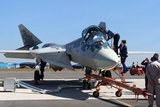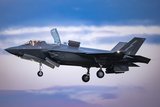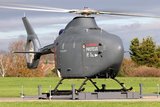B-2 stealth bomber receives new digital communications system
Northrop Grumman and the USAF continue to modernise the B-2 stealth bomber. (Photo: US DoD)
The demonstration included approximately 50 mission transfers during a two-day period in partnership with the Air Force. A B-2 was configured with the manufacturer’s Multi-Mission Domain (MMD) architecture.
MMD is an open mission system architecture for the aircraft that allows rapid and affordable fielding of modern mission capabilities.
This work is part of ongoing B-2 modernisation efforts that seek to increase the use of digital technologies in the platform.
IAMT provides an enhanced capability, allowing the B-2 to execute digital, machine-to-machine transfers of new missions while in flight, directly integrating them into the aircraft's systems.
This technology is an integral component of Northrop Grumman's B-2 Collaborative Combat Communication (B2C3) Spiral 1 programme, which serves to elevate the stealth bomber’s communication capabilities within the modern battlefield landscape.
‘We are providing the B-2 with the capabilities to communicate and operate in advanced battle management systems and the joint all-domain command and control environment, keeping B-2 ahead of evolving threats,’ said Nikki Kodama, VP and B-2 programme manager at Northrop Grumman.
‘The integration of this digital software with our weapon system will further enhance the connectivity and survivability in highly contested environments as part of our ongoing modernisation effort.’
Modernisation efforts on the Spirit began in 2007 to ensure it remains fully capable against evolving threats.
Northrop Grumman and the USAF announced the continuation of enhancement and modernisation of the B-2 Spirit fleet at the end of last summer, with the new capabilities including long-range stealth missiles.
According to Shephard Defence Insight, the USAF plans to retire the B-2 no later than 2032 due to its operational and maintenance costs.
Related Equipment in Defence Insight
More from Air Warfare
-
![Northrop Grumman to fly new Project Talon CCA by late 2026]()
Northrop Grumman to fly new Project Talon CCA by late 2026
The newly unveiled collaborative combat aircraft looks to strike a balance between capability and cost-effectiveness, according to the company.
-
![MBDA and Lockheed move closer to F-35A Meteor flight tests]()
MBDA and Lockheed move closer to F-35A Meteor flight tests
Following the completion of successful ground tests, one more exercise remains before flight testing can begin.
-
![Leonardo’s Proteus concludes ground tests with maiden flight on horizon]()
Leonardo’s Proteus concludes ground tests with maiden flight on horizon
The technology demonstrator forms part of a wider effort to help the Royal Navy explore the potential of uncrewed systems supporting its existing crewed aviation platforms.
-
![Airbus MQ-72C Lakota Connector progress on track ahead of pending USMC decision]()
Airbus MQ-72C Lakota Connector progress on track ahead of pending USMC decision
The MQ-7C uncrewed aircraft is currently undergoing further internal flight tests ahead of a government test event anticipated for next year.






















